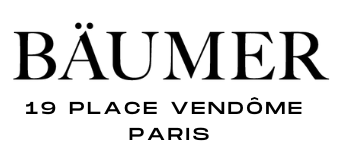The purity of the stone is one of the “4Cs”, making it possible to estimate the value of a diamond: the more the diamond is said to be “pure”, that is to say without inclusion, the more expensive it is. Indeed, natural diamonds are formed by the crystallization of carbon more than 150 kilometers from the earth's surface, where the heat and pressure are extreme enough to stabilize the carbon atoms. However, this natural process is long because the atoms are added one after the other and imperfections can occur during this "growth" of the diamond crystal (uncut raw form). These imperfections are called inclusions and can be present inside as well as on the surface of the stone.
What is a synthetic diamond?
A synthetic diamond differs from a natural diamond because it is created in the laboratory. Although this diamond is man-made, it has the same characteristics as a diamond from a rock.
At Bäumer Vendôme, our jewelry is only made of natural diamonds.
How to assess the clarity of a diamond?
International standards exist to measure the degree of purity of a diamond. Each step is determined by the size and position of the inclusions and the criteria are always judged against observation by the table and the crown.
The GIA (Gemological Institute of America, international authority
of diamond certification) is:

Can the clarity of a diamond be improved or changed?
There are two techniques for improving the clarity of a diamond: laser drilling and fracture filling. These two treatments must be notified on the gemological certificate of the diamond or at least orally if the crystal has no certification.
The first treatment is laser drilling, known as “laser drill”, which consists of drilling a hole in the diamond using a laser to reach one or more fairly large penalizing inclusions inside the diamond; the laser begins or even disintegrates the troublesome inclusion which is then dissolved by inserting acids into the small tunnel obtained. The cavity resulting from the technique is then filled with colorless material.
The second treatment is the sealing of a fracture or “filled fractures”. Also known as “YEHUDA treatment”, named after its inventor Mr. ZVI YEHUDA. It was introduced into the diamond trade in the late 1980s and fills emerging fractures that join the surface using a substance with a refractive index close to that of diamond. This reduces the visibility of fractures.
However, this treatment is not permanent and can be altered by the following external factors (non-exhaustive list):
• The sun which can make the filling darker.
• Heating the diamond, to repair a setting for example, because the filling can melt.
• Repeated shocks which may crack the filler.
• Acid cleaning which can dissolve the filler
• Ultrasonic cleaning which can break it.
In addition, it is extremely inadvisable to heat a stone treated by sealing a fracture because the filling material reacts strongly to the heat and swells under it; it can then either come out of the fracture or cause the stone to burst.
What are the types of inclusions?
There are several types of inclusions:
• Gaseous or liquid inclusions which are often undetectable with a magnifying glass.
• Solid inclusions. This is the presence within the diamond of other more or less microscopic crystals. These imprisoned materials sometimes give an idea of the origin of the diamond.
• The other inclusions are either natural or due to the size of the stone. These are fractures, chippings or depressions in the diamond. These inclusions can be closed (inside the stone) or open (when they come to the surface of the stone).












